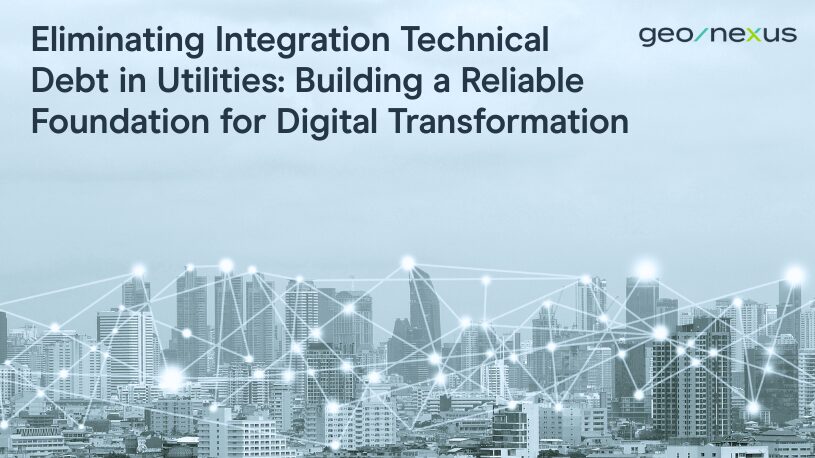
Across electric, gas, and water utilities, digital transformation depends on one thing: integration. Whether it’s Esri ArcGIS, IBM Maximo, SAP, Oracle, or customer information systems, integration is what ensures that asset, network, and customer data flow seamlessly between platforms.
But years of patches, one-off scripts, and legacy middleware have left many utilities burdened with integration technical debt—a silent drag on modernization.
Integration technical debt refers to the long-term cost of outdated or poorly structured integrations. Each hard-coded script, manual data transfer, or unsupported middleware layer compounds risk—slowing upgrades, inflating costs, and eroding data confidence.
For utilities, that risk is amplified by aging infrastructure, workforce turnover, and the growing need for real-time operational data to support grid modernization, regulatory compliance, and customer transparency.
Many utilities didn’t intentionally build technical debt—it accumulated as systems evolved. Common contributors include:
Over time, these practices create fragile integrations that can fail during critical upgrades—like migrating from Esri Geometric Network to Utility Network or from Maximo 7.6 to MAS 9. The result? Delays, data inconsistencies, and unplanned downtime that ripple across operations.
Eliminating integration technical debt requires a strategic, platform-based approach—one that treats integration as an enterprise discipline rather than a series of projects.
The Geonexus Integration Platform (GIP) was built specifically to help utilities standardize, document, and sustain integrations across core systems. It replaces fragile interfaces with a configurable, low-code framework that evolves as technology does.
Here’s how GIP helps CIOs and GIS Directors regain control of their integration landscape:
Every integration in GIP is centrally managed and documented—including configuration, data lineage, and dependencies. This transparency transforms integrations from “black boxes” into auditable, maintainable assets that support compliance and change management.
GIP continuously monitors data synchronization, record volumes, and system health through proactive reporting and alerts—providing oversight that helps IT and GIS teams identify and resolve issues before they affect field or customer operations.
By replacing custom code with version-controlled, low-code configuration, GIP enables rapid adaptation to new systems, data models, or upgrade cycles—without the recurring burden of rework.
GIP’s architecture ensures utilities can integrate emerging technologies—such as predictive analytics, AI-driven asset insights, or cloud-based data lakes—without increasing complexity or compromising reliability.
Utilities leveraging GIP to reduce integration debt have achieved measurable results:
By moving from reactive maintenance to proactive management, utilities can focus resources on grid modernization, data governance, and digital resilience rather than chasing integration issues.
Integration technical debt doesn’t vanish overnight—but it can be systematically eliminated. The key is discipline, transparency, and standardization.
With the Geonexus Integration Platform, utilities gain a sustainable integration strategy—one that ensures clean, reliable data flows between systems like ArcGIS, Maximo, SAP, and Oracle, while reducing operational risk and preparing for the next wave of digital transformation.
Geonexus Technologies provides integration solutions purpose-built for asset-intensive industries. The Geonexus Integration Platform (GIP) ensures reliable, secure, and auditable synchronization between critical enterprise systems—eliminating technical debt, improving operational confidence, and enabling utilities to focus on innovation instead of maintenance.